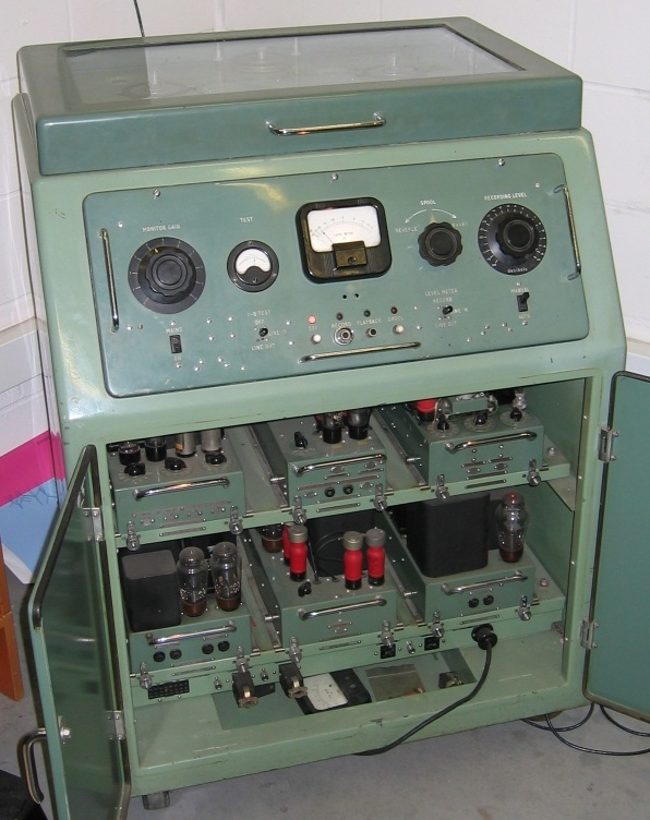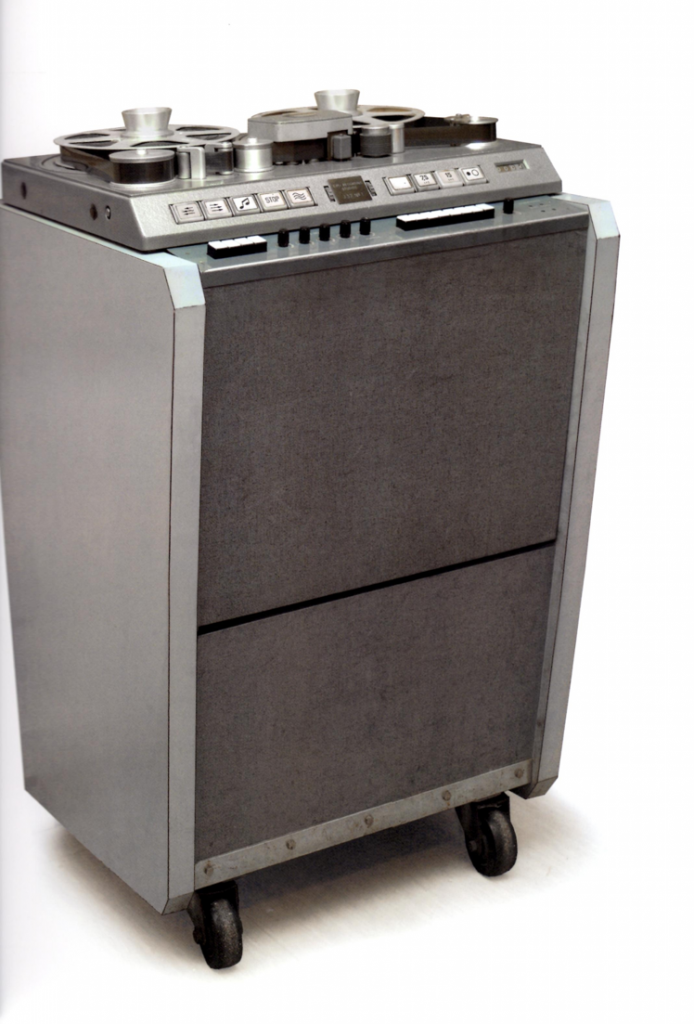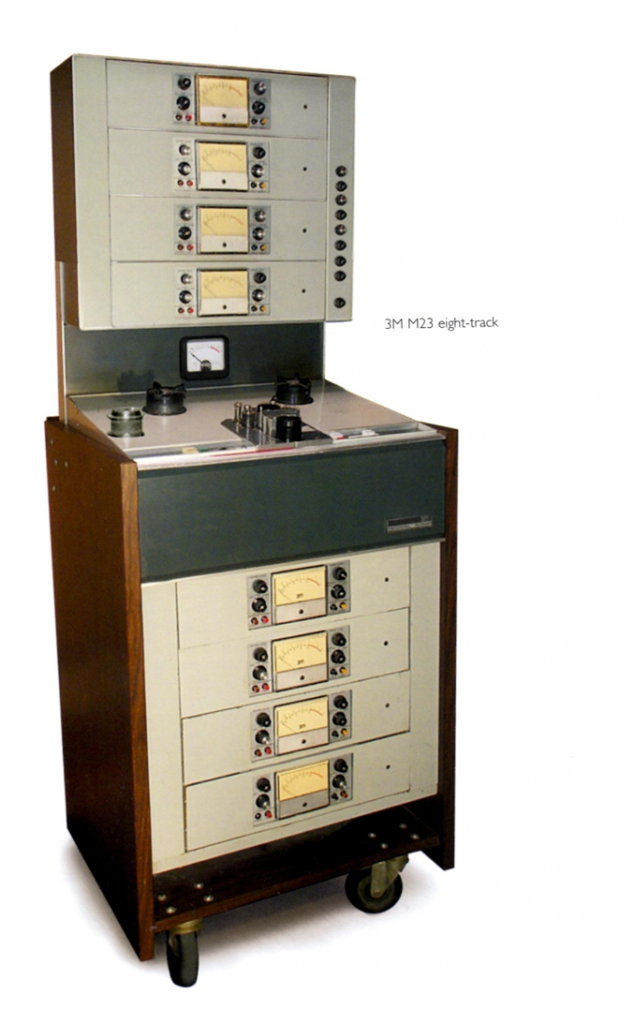On Monday June 21st, the Melbourne Section of the AES held our regular bi-monthly meeting via Zoom.
There was a gratifyingly high attendance of more than forty members and visitors, many from interstate and overseas.
The forced move to Zoom has certainly increased the reach of our meetings.
Chairman Graeme Huon introduced Martin Benge to take us through his long and illustrious career as a recording engineer, producer, and studio manager at EMI’s Abbey Road (UK), Studios 301(Sydney), and beyond.
Martin titled his talk
“From Grooves to Gigabytes”
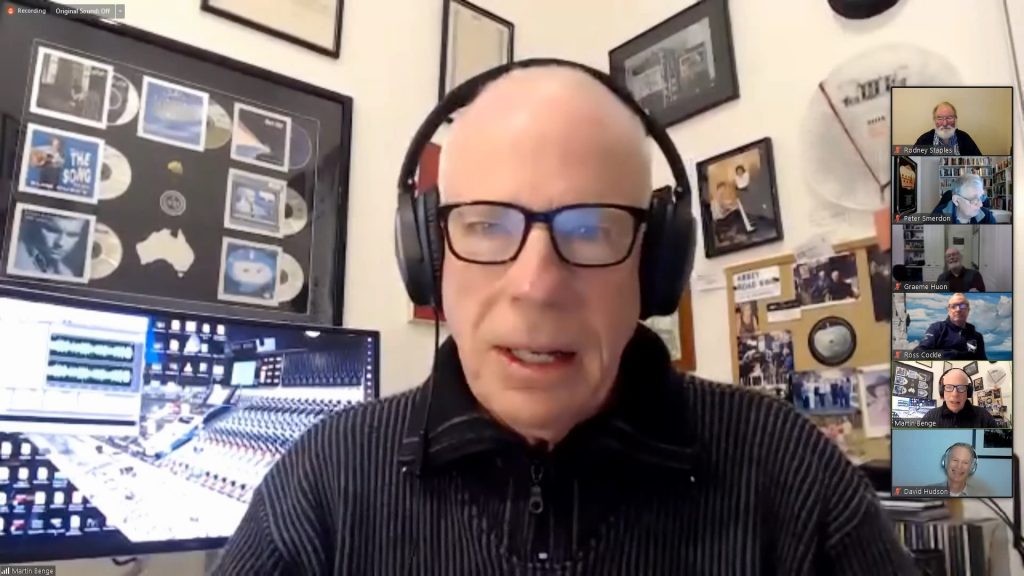
He began by outlining his start at EMI as an electronics apprentice in 1962. He moved on to a brief history of the early days of EMI, playing a video of the opening of the EMI Abbey Road studios in 1931, featuring a performance of the London Symphony Orchestra conducted by Sir Edward Elgar performing Land of Hope and Glory.
(full video https://www.youtube.com/watch?v=bD2j-aicBYQ )
Martin then outlined his start at the EMI Hayes factory in 1962 where he worked on the manufacture of EMI recording equipment, and was transferred to the Abbey Road Studios technical workshop (known as the “Amp Room”) in 1965. Martin recalled that not long after he arrived at Abbey Road, he realized that he wanted to be involved in the actual recording process. He achieved this ambition in the late sixties with a transfer to position as a recording (“balance”) engineer.
Martin displayed photos of the early equipment he worked with, going into some detail of the functions of the REDD51 console, and played an example of his early work (Sidney Bowman – Stepping out with My Baby – https://www.youtube.com/watch?v=dyDbFvX3Dqo).
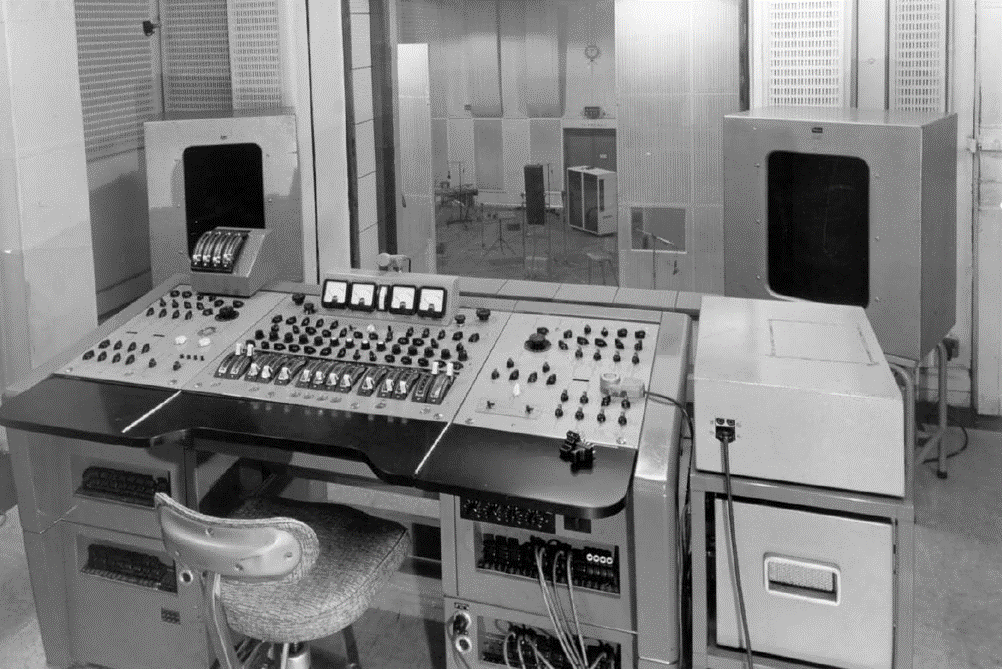
He then recounted engineering his first Beatles session, recording Across the Universe (https://www.youtube.com/watch?v=90M60PzmxEE) in February 1968, including an anecdote about how the band recruited three female fans from the crowd gathered in front of the studios to sing backing for the song’s chorus – but only two were good enough to end up on the recording.
He also told us of his experience working on a Beatles performance of All You Need is Love, supporting the worldwide satellite linkup associated with that international event. https://twitter.com/AbbeyRoad/status/1408425204322291716
Martin then told us of moving to the Classical Department, recording luminaries like Otto Klemperer, working with the London Symphony Orchestra, and the London Philharmonic, and then described a typical session in Studio One with Yehudi Menuhin, covering the microphone choice and placement.
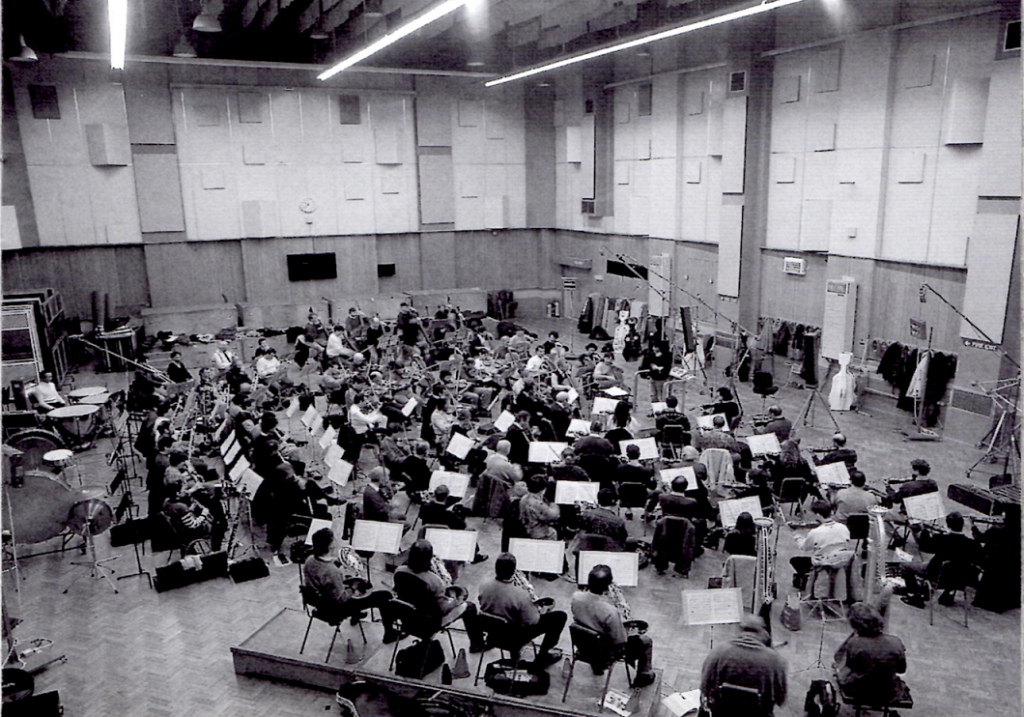
He described the large Studio One sometimes being pressed into overflow service for pop music at times of heavy bookings, and the way that the livelier acoustics had to be tamed with the use of portable screens, and in the early days there was no drum booth.
He also described working with the classical pianist Daniel Barrenboim, and the work they did with unique stereo micing arrangements to open up the sound.
Martin then described the EMI BTR2 (mono) and BTR3 (stereo) tape recorders, and the care that had to be taken in their alignment. He went on to describe the arrival of the (now famous) Studer J37 4-Track, the quality of the machine, and the additional flexibility it added, moving on to describe his recording of Kathy Kirby singing Somethin’s Happening in 1968 in Studio 2, and played a segment from this performance.
After this Martin described the arrival of their first 8-Track machine, an early 3M Model M23. He recounted that the M23 was the only reliable 8-Track option available at that time, but it had two glaring omissions from its functionality. It did not have a sync-repro option for overdubbing, nor a tape position clock, so spooling to a particular point on the tape was a hit-and-miss affair.
The absence of sync playback was addressed by the “boffins” in the Research Lab upstairs, who modified the machine to provide a sync output.
Martin then described the introduction of their first 8-Track capable transistorized console the TG12345, and the steep learning curve needed to deal with the very nasty-sounding transistor clipping distortion, compared to the far more forgiving valve clipping sound.
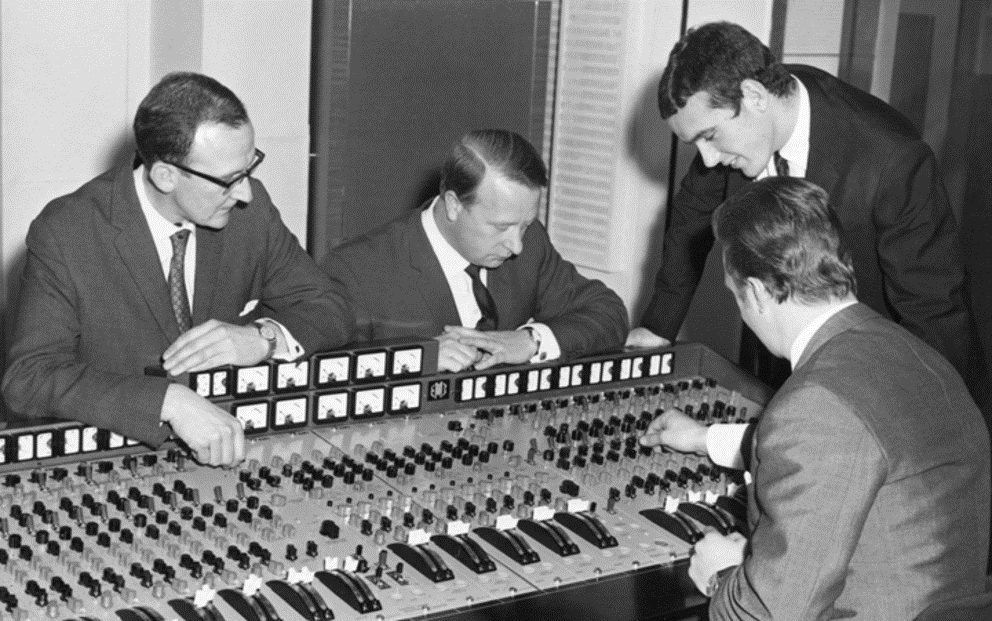
He then described the console evolution to the Mark 2, which added 16-track capabilities, and superior electronics and features to the Mark 1. The Mark 4 came later – still 16-Track but with more channels, and an ergonomic curved design. He told us that three of the Mark 4s were installed at Abbey Road.
Before moving on to discuss his Australian experiences, Martin opened the meeting to questions.
There was a range of questions, covering his motivation to move from technical to recording, the speakers used at Abbey Road in those days, microphone setup, studio foldback and playback speakers and headphone use.
Following this Q&A session Martin went on to describe how he left Abbey Road in 1970, got married and went travelling, finally arriving in Sydney where he landed a job at EMI Studios Sydney in 1971.
Martin then looked back to describe the early history of EMI (and its predecessors) in Sydney, playing an interesting audio piece on the 1926 opening of the Columbia Gramophone Company Homebush factory and studio by the NSW Governor, followed by the first recording made in the studio Freshie by Sidney Simpson and his Wentworth Café Orchestra.
(https://www.nfsa.gov.au/collection/curated/freshie-sydney-simpson-and-his-wentworth-cafe-orchestra )
He then told of the move of the studios in 1954 to the EMI headquarters building at 301 Castlereagh Street Sydney, where they still were located when he joined in 1971. He described how the studios he found were primarily set up for radio production. Fortunately for Martin, that side of the business was waning, and music recording became the primary function. Martin played for us a short corporate video from 1969 promoting their music recording and vinyl pressing capabilities.
Martin then told of the arrival at 301 of the TG12345 Mk2 mixing console which was paired with a Studer A80 tape recorder. He indicated that he regarded this as a fine combination of kit and demonstrated the kind of recordings he could make with that combination.

He told us that in 1975 he went freelance, partnering with jazz legend John Sangster to form the Rainforest Records label, playing us some of his work with John Sangster at that time.
Still doing a lot of his work at 301, he recounted that in 1979 all three studios were rebuilt with Neve 8078 consoles and dual synchronized 16-Track Studers. He described the challenges of synchronizing dual recorders, along with the challenges of the Neve automation, as well as the incompatibility with other facilities, which were increasingly using 24-Track on 2inch. Martin said that these challenges caused 301 to convert one of the dual 16-Tracks to 24-Track, and described recording Jazz Rock Fusion group Crossfire’s Youth in Asia in 1981 – recording at Paradise Studios, mixing at Studios 301′
He played us a segment from that release.
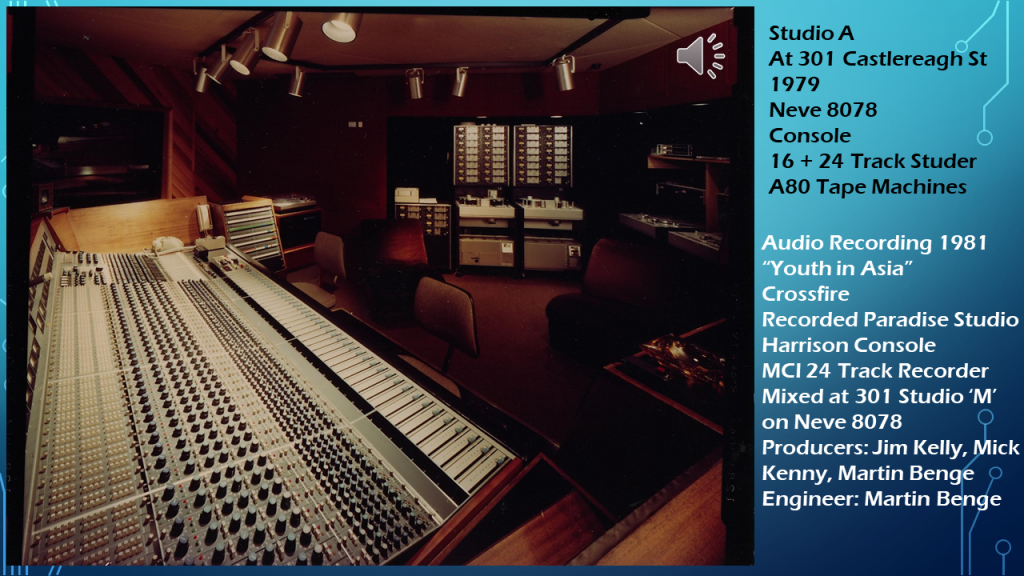
Martin recounted that in 1986 he returned to EMI Studios 301 as General Manager, with Studio B then being upgraded to an SSL 4000E. He recalled that the clean sound of the SSL, together with its superior automation capabilities was popular with many. However, the Neve’s characteristic “warm” sound was becoming more popular so the Neves were retained in the other two studios, giving 301 the opportunity to cater to both camps.
Martin then documented the move to digital recording, indicating that of the two competing multitrack formats Sony’s DASH and Mitsubishi’s ProDigi (PD), EMI standardized on the PD format internationally.
They settled on the Mitsubishi X880 32-Track which mated well with the Neve 8078’s 32 busses and 32 channel monitor system. He also remarked that the X880 had excellent converters for the time, well surpassing the Sonys’ of the day.
He then played what turned out to be his last recording of his time at 301, before committing full-time to studio management at 301, and later at Abbey Road. It was a Don Burrows title Nuages
https://www.youtube.com/watch?v=mdyj6mzrEYQ
He then described the difficulties when EMI sold the building and moved their offices but left the studios in place at 301, and how building renovations on other floors of the building, and demolition of the adjacent building made recording difficult on occasions.

Martin then took a break for questions before outlining his return to Abbey Road.
Questions covered a range of topics on the equipment featured, his adventures with Rainforest Records, and stereo digital recording formats, including the Sony PCM format.
Following on, Martin recounted his return in 1992 to Abbey Road as Vice President, EMI Studios Group, following EMI’s purchase of the Branston studio properties, Townhouse, Olympic, The Manor, Townhouse Three, and Manor Mobiles to add to the Abbey Road property.
He described his involvement with the Beatles Anthology, being produced by George Martin and the three remaining Beatles, and how Abbey Road was able to meet their needs by setting up a facility where they were able to use equipment of the same era as when their music was recorded.
Martin then skated through the rest of his time in London, indicating that that was enough material for another presentation, and returned his focus to Sydney, and what had been happening with Studios 301, then took us through the timeline of the sale of 301 to its then studio manager in 1995, and the ultimate sale to Tom Misner in 1997, who consolidated it into his new facility at Alexandria, which Martin had become involved in designing. This led to the rebirth of Studios 301 at Alexandria in 1999, where it operated very successfully until 2018. In 2016, 301 celebrated 90 years of recording, and announced a relocation to new premises at Ellis Ave Alexandria, which was realized in 2018 at a cost of $12million.
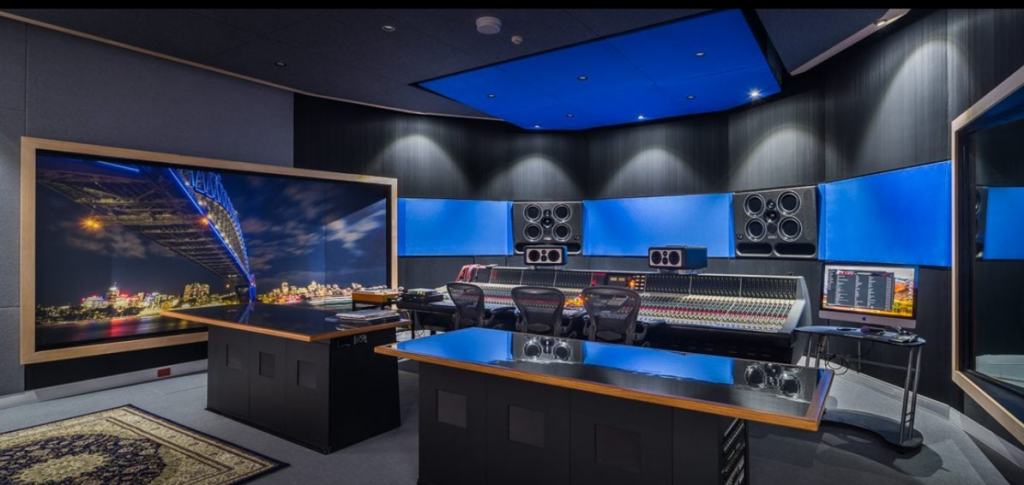
Towards the end of his presentation, Martin displayed a timeline of the EMI history, concluding with the acquisition of key EMI assets, including the Abbey Road Studios, by Universal Music – and then covered his current “incarnation” as a presenter on his local community radio station 92.7 Bay & Basin FM, Jervis Bay.
He continued his talk with a timeline of digital milestones, starting with the Sony PCM-F1 in 1977, through to the ubiquitous ProTools. Then there was the Apple iPod/iTunes combination, which he proposed was the one device that has had the most impact on the recording industry, and following that came the digital music storage, streaming and playback on the common mobile phone. He lamented that it was not a music company that had started that revolution, but a computer company (Steve Jobs at Apple).
Looking to the future, he indicated his belief that high end studios would always be the best place for audio excellence, with access to professional engineers/producers, acoustics, monitoring, plus the latest technology, knowledge, and experience.
He concluded his presentation with a hint of the future, with new technology and “Artificial Intelligence” driving new ways of working with audio, and online collaboration providing more opportunities for creative music production and business for studios. He also hinted at the opportunities developing from the renewed interest in analogue technologies and niche products such as vinyl.
Another Q&A session followed Martin’s presentation covering a wide range of topics, like the fate of the EMI UK tape vault, studio foldback and playback speakers, the painful transition from valve consoles to solid state, microphone placement for classical recordings, synchronizers, early ProTools challenges, tape stock performance and noise reduction.
We thank Martin for a most interesting and informative presentation, and look forward to the time he can return to talk to us again.
The Zoom video recording of the meeting is available here and on our YouTube channel
This video can be viewed directly on YouTube at: https://youtu.be/9TiGJQ6Wq0Y
The slides of Martin’s presentation are available in PDF form at:
https://www.aesmelbourne.org.au/wp-content/media/GroovesToGigabytes.pdf
Other Links:
Audio Technology article on Martin’s Lifetime Achievement Award:
https://www.audiotechnology.com/issues/issue-57/lifetime-achievement-award-martin-benge
Studios 301 currently: https://studios301.com/
History of 301 (the 10,000m view): https://studios301.com/about/
Abbey Road Studios: https://www.abbeyroad.com/

